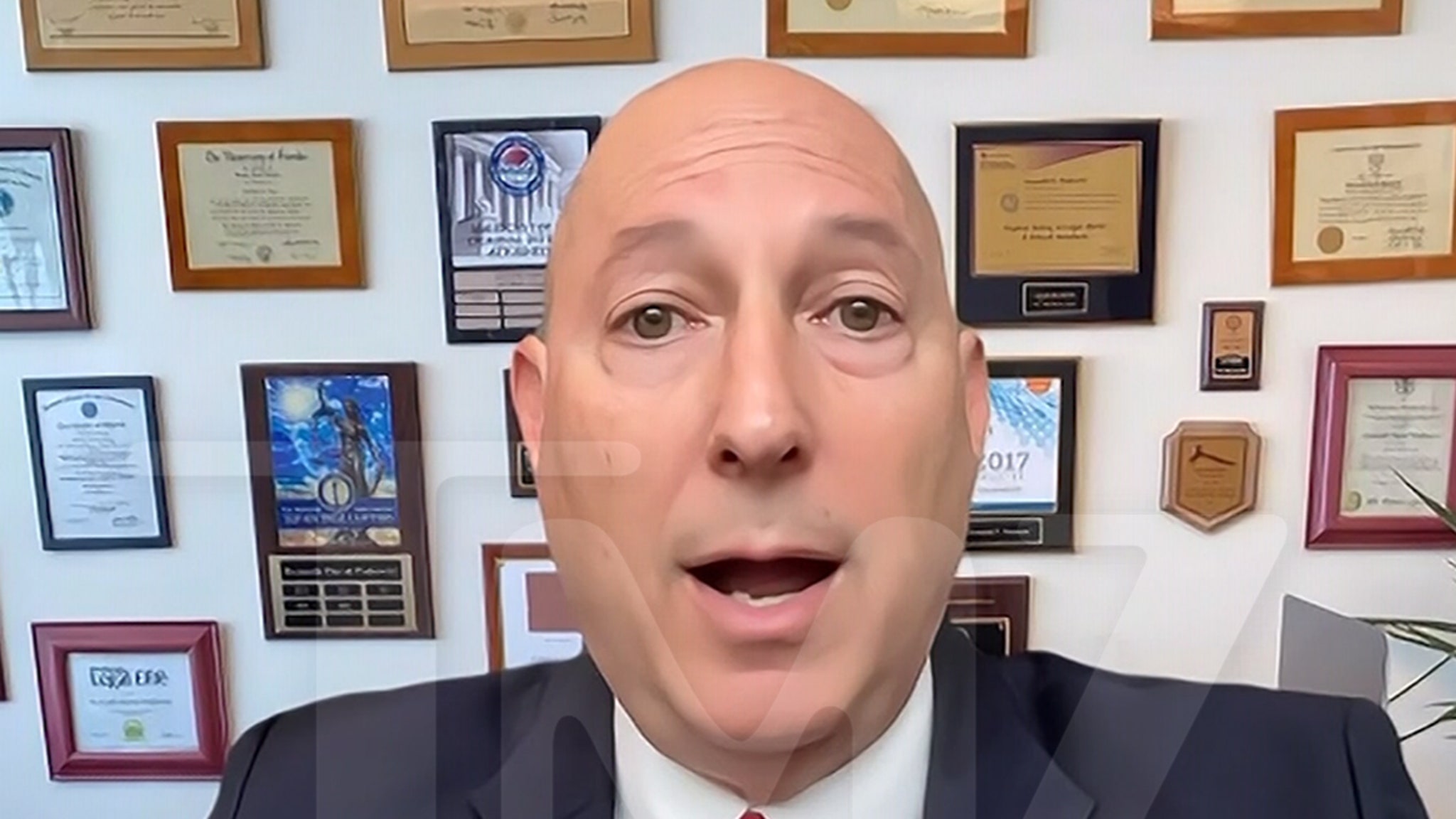Ohio
Ex-GOP Ohio House speaker sentenced to 20 years for role in $60M bribery scheme; appeal expected
/cloudfront-us-east-1.images.arcpublishing.com/gray/VWPP55EFLFDEVAOCV7DQEOHU2E.jpg)
CINCINNATI (AP) – Former Ohio House Speaker Larry Householder was sentenced to 20 years in prison on Thursday for his role in the largest corruption scandal in state history.
The 64-year-old Republican appeared before U.S. District Judge Timothy Black, who meted out the punishment, about an hour after he and his wife Taundra arrived at the federal courthouse.
Householder had pleaded for mercy ahead of the sentencing – not on behalf of himself, but his wife of 40 years, sons and friends. His son Nathan and other friends and family were present in the courtroom.
Black instead delivered a blistering rebuke, accusing Householder of abusing voters’ trust.
“You were a bully with a lust for power who thought he was better than everyone else,” he said.
Householder also received one year of probation and showed little emotion before being led out of the courtroom in handcuffs as he was remanded into the custody of U.S. Marshals.
Householder and lobbyist Matt Borges, a former chair of the Ohio Republican Party, were both convicted in April of a single racketeering charge each, after a six-week trial. Borges is set to be sentenced Friday.
Jurors found that Householder orchestrated and Borges participated in a $60 million bribery scheme secretly funded by Akron-based FirstEnergy Corp. to secure Householder’s power, elect his allies, pass legislation containing a $1 billion bailout for two aging nuclear power plants owned by a FirstEnergy affiliate and then to use a dirty tricks campaign to stifle a ballot effort to overturn the bill.
Federal prosecutors had recommended Householder receive 16 to 20 years, holding in a sentencing memo that he “acted as the quintessential mob boss, directing the criminal enterprise from the shadows and using his casket carriers to execute the scheme.” That strategy, they said, gave Householder “plausible deniability.”
His own attorneys had recommended just 12 to 18 months, reporting to the judge that he is “a broken man” who has been “humiliated and disgraced” by the ordeal of his widely reported arrest, high-profile prosecution and seven-week trial by jury.
Householder was one of Ohio’s most powerful politicians, a historically twice-elected speaker, before his indictment. After Householder’s arrest in July 2020, the Republican-controlled House ousted him from his leadership post, but he refused to resign for nearly a year on grounds he was innocent until proven guilty. In a bipartisan vote, representatives ultimately ousted him from the chamber in 2021 – the first such expulsion in Ohio in 150 years.
All told, five people and a dark money group have been charged so far for their roles in the scheme. A federal investigation remains ongoing.
During the trial, the prosecution called two of the people arrested – Juan Cespedes and Jeff Longstreth, who both pleaded guilty and are cooperating – to testify about political contributions they said were not ordinary, but rather bribes intended to secure passage of the bailout legislation. Generation Now, the 501(c) nonprofit through which much of the money flowed, also has pleaded guilty to racketeering.
Cespedes and Longstreth face up to six months in prison each under their plea deals. Neither has been sentenced.
The last person arrested, the late Statehouse superlobbyist Neil Clark, was heard on tape in the courtroom. Clark had pleaded not guilty before dying by suicide in March 2021.
All the alleged members of the conspiracy benefited personally from the scheme, using sums that an FBI agent described colloquially as “bags of cash” from FirstEnergy. Householder spent around $500,000 of FirstEnergy money to settle a business lawsuit, pay attorneys, deal with expenses at his Florida home and pay off credit card debt. Another $97,000 was used to pay staff and expenses for his 2018 reelection campaign.
Copyright 2023 WTVG. All rights reserved.

Ohio
Watch Ohio State Freshman Wide Receiver Jeremiah Smith in Nike's New Ad, “I Told You So”

Jeremiah Smith is having the most electrifying freshman year in the history of Ohio State football.
And now, he’s starring in Nike commercials alongside some of the greatest players in college football and the NFL.
Appearing in Nike’s new spot, “I Told You So,” Smith is featured running a route against Oregon and making his ridiculous, one-handed sideline catch against Michigan State.
The star-studded ad includes Ja’Marr Chase, Derrick Henry, Saquon Barkley, CeeDee Lamb, Najee Harris, and other NFL greats, alongside college standouts like Ashton Jeanty, Shedeur Sanders, and Dillon Gabriel.
Smith has obliterated every freshman receiving record at Ohio State and enters the Buckeyes’ Rose Bowl matchup with No. 1 Oregon having caught 63 passes for 1,037 yards and 12 touchdowns. In Ohio State’s 42-17 win over No. 9 Tennessee in the first round of the College Football Playoff, the wideout hauled in six catches for 103 yards and two statement-setting touchdowns.
Ohio
Calculator: Are you middle class in Ohio? Here’s what middle, top 10% and top 1% make

Minimum wage hike to go into effect for some across US
Workers in several states and cities will see minimum wage increases go into effect on January 1, 2025, as they continue to battle with high prices.
How much do you need to earn to be considered middle class in Ohio?
Defining the middle class is more complicated than it may seem, especially since the United States Census Bureau does not have an official definition for the term.
The Pew Research Center defines the middle class as households with incomes between 67% and 200% of the median income – meaning those who earn between two-thirds and twice as much as the median household in Ohio.
According to the most recent data from 2022, middle-income households in the U.S. earned between approximately $56,600 and $169,800, Pew Research Center reported. Households earning less than $56,600 were considered lower-income, while those earning more than $169,800 were classified as upper-income.
Calculator: Are you in your Ohio city’s middle class?
In Ohio, the median income is lower than the nationwide average.
A study from the personal finance site SmartAsset earlier this year found that the middle income range for the state falls between $43,809 and $131,440, with the median household income at $65,720.
Check to see where you fall in your city.
How much do Ohio’s highest-earning households make?
To be in the top 10% of earners in Ohio, you need to make $227,669, according to Yahoo Finance. In 2024, the pre-tax salary required to be in the top 1% of earners in Ohio is $494,700, per SmartAsset.
Ohio
Ryan Day reveals why Ohio State must change gameplan in rematch vs. Oregon

Ohio State‘s convincing 42-17 win over Tennessee in the first round of the College Football Playoff set the stage for a blockbuster rematch between the Buckeyes and the undefeated, top-seeded Oregon Ducks.
The Buckeyes have known this rematch was looming in the quarterfinals since the CFP bracket was set, but weren’t able to look past the Vols until the final whistle.
Get your team’s official College Football Playoff watch from AXIA by CLICKING HERE: “Watches that tell so much more than time”
Now set to face a fresh Oregon squad coming off a Big Ten Championship win over Penn State and a first-round bye, Ohio State head coach Ryan Day explained why this Ducks squad isn’t the same one they lost to earlier this year — and either are they.
“It’s not like we played them just a couple weeks ago,” Day said. “This was midseason, and there’s been a lot of football played since then. Like I said, I feel we’ve evolved. They’ve evolved. Different teams. So there are certainly things that you want to look at that happened in that game but also, as time’s moved on, how they’ve changed, how we’ve changed and how does that fit as we put together the game plan.
“But ultimately, we want to make sure that we’re putting together a great game plan so our guys can play fast, they understand what we’re trying to get done in terms of attacking in all three phases, and they can play with emotion and physicality.”
During the regular season, the clock literally ran out on Ohio State and left Eugene with a heartbreaking 32-31 loss. The Ducks are still undefeated heading into Saturday after edging past the Buckeyes in October.
“We’ve made adjustments coming off that game, and we worked hard to make sure that we’re putting our guys in the best position to be successful,” he continued. “We’ll do that again against these guys this week and go compete our tails off.”
The rematch between the Buckeyes and Ducks is set for 5 p.m. ET on New Year’s Day and will air live on ESPN.
-
/cdn.vox-cdn.com/uploads/chorus_asset/file/24924653/236780_Google_AntiTrust_Trial_Custom_Art_CVirginia__0003_1.png)
/cdn.vox-cdn.com/uploads/chorus_asset/file/24924653/236780_Google_AntiTrust_Trial_Custom_Art_CVirginia__0003_1.png) Technology7 days ago
Technology7 days agoGoogle’s counteroffer to the government trying to break it up is unbundling Android apps
-

 News1 week ago
News1 week agoNovo Nordisk shares tumble as weight-loss drug trial data disappoints
-

 Politics1 week ago
Politics1 week agoIllegal immigrant sexually abused child in the U.S. after being removed from the country five times
-

 Entertainment1 week ago
Entertainment1 week ago'It's a little holiday gift': Inside the Weeknd's free Santa Monica show for his biggest fans
-

 Lifestyle1 week ago
Lifestyle1 week agoThink you can't dance? Get up and try these tips in our comic. We dare you!
-
/cdn.vox-cdn.com/uploads/chorus_asset/file/25672934/Metaphor_Key_Art_Horizontal.png)
/cdn.vox-cdn.com/uploads/chorus_asset/file/25672934/Metaphor_Key_Art_Horizontal.png) Technology3 days ago
Technology3 days agoThere’s a reason Metaphor: ReFantanzio’s battle music sounds as cool as it does
-

 Technology1 week ago
Technology1 week agoFox News AI Newsletter: OpenAI responds to Elon Musk's lawsuit
-

 News5 days ago
News5 days agoFrance’s new premier selects Eric Lombard as finance minister



















